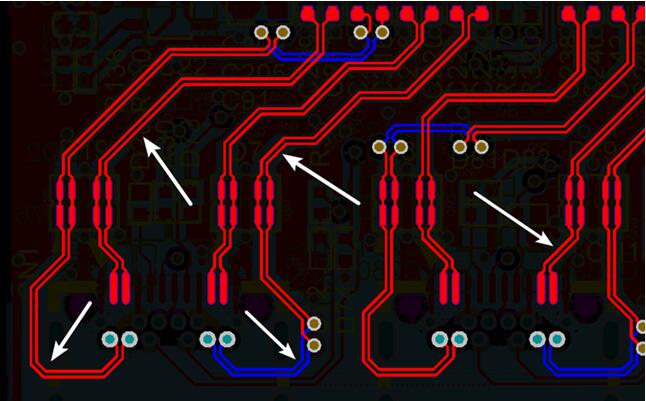Input impedance refers to the equivalent impedance at the input end of a circuit. Add a voltage source U to the input terminal and measure the current I at the input terminal, then the input impedance Rin is U/I. You can imagine the input end as the two ends of a resistor, and the resistance value of this resistor is the input impedance.

Why does the PCB board require impedance?
PCB impedance refers to the parameters of resistance and reactance, which act as a barrier to AC power. Impedance processing is essential in the production of PCB.
1. PCB should consider installing electronic components and considering issues such as conductivity and signal transmission performance when plugging, so it is required that the impedance should be as low as possible, and the resistivity should be less than 1 × per square centimeter.
2. PCB needs to undergo manufacturing processes such as copper deposition, electro-tin plating (or chemical plating, or thermal tin spraying), and connector welding during the production process. The materials used in these processes must ensure the bottom resistivity to ensure that the overall impedance of the circuit board is low enough to meet the quality requirements of the product to work normally.
3. PCB tin plating is the most common problem in the entire circuit board production, and it is a key link that affects impedance. The biggest drawback of electroless tin plating is its tendency to discolor (easily oxidize and dissolve), and poor soldering, which can lead to difficulty in soldering circuit boards, high impedance, poor conductivity, or unstable overall board performance.
4. There are various signals in the conductors of PCB and when the transmission rate is to be increased, its frequency must be increased. If the circuit itself is different due to factors such as etching, layer thickness, and line width, it will cause changes in resistance, cause signal distortion, and lead to a decrease in the performance of the circuit board. Therefore, it is necessary to control the impedance value within a certain range.
PCB impedance refers to the impedance between wires, power supplies, loads, and other components on a circuit board. PCB impedance control is an important aspect of designing PCB circuit boards, which is an important factor in ensuring circuit board performance and stability.
PCB impedance depends on the circuit geometry and dielectric constant. If not designed properly, impedance can change and cause problems, such as signal distortion or electromagnetic interference. If it is necessary to maintain appropriate impedance when designing a PCB circuit board, it is necessary to have a clear understanding of how to perform impedance control.
1. Wiring width and distance
When designing a PCB, impedance should be changed by increasing the line width or increasing the distance between wires. In PCB design, the distance between devices is measured in millimeters, so increasing the distance can increase impedance, which is a common and simple impedance control technique. On the other hand, increasing the width of the wire can reduce impedance.
2. Number of PCB layers
Increasing the number of layers on a PCB is another way to control impedance, but this method usually increases manufacturing costs. For complex PCBs, increasing the number of layers is still an effective impedance control method.
3. Using differential lines
A differential line consists of two parallel wires, which, unlike a single-ended line, have the same impedance between the two wires of the differential line. Therefore, differential transmission lines can effectively reduce noise interference and improve signal transmission performance.
4. PCB circuit board materials
PCB circuit board materials can also affect impedance. Usually, the higher the dielectric constant of the dielectric material, the greater the impedance of the PCB circuit board. Therefore, the impedance of PCBs can be controlled by selecting appropriate materials.
Input impedance control is very important when designing PCB circuit boards. In high-speed circuit design, correct impedance control can minimize noise interference and signal distortion, thereby improving signal transmission performance. By using appropriate technology and materials, the impedance of PCB circuit boards can be easily controlled and high-quality PCB design results can be achieved.